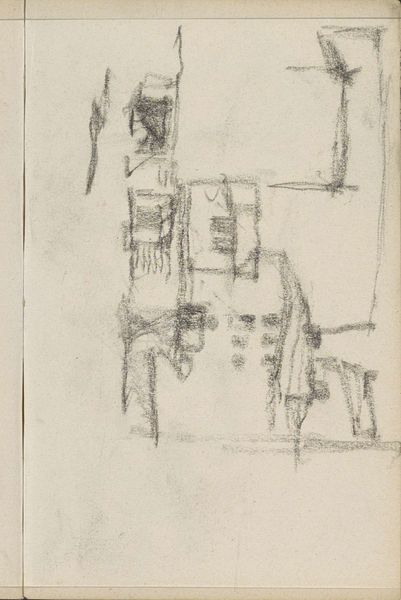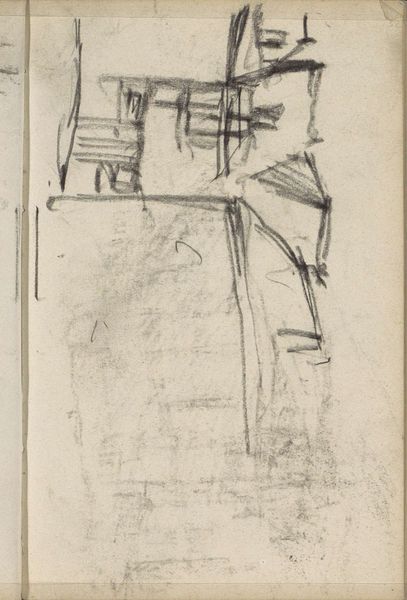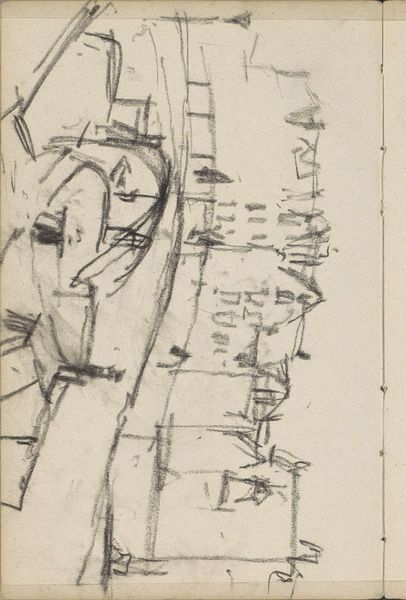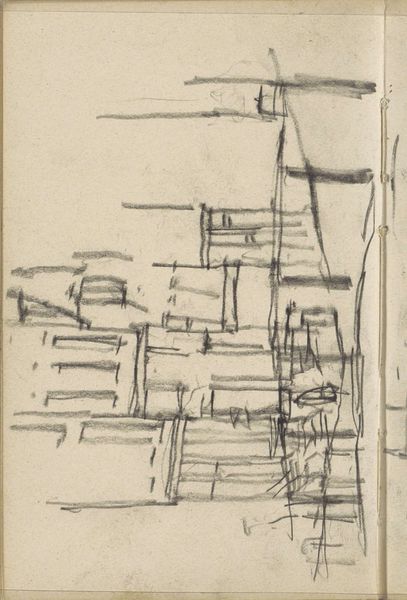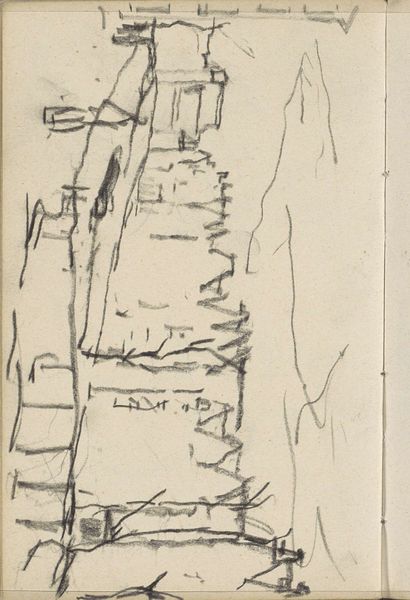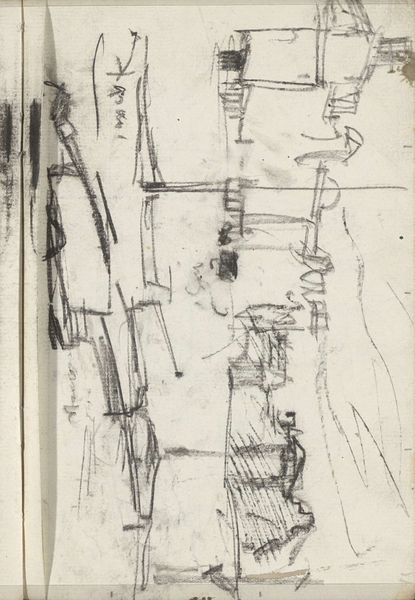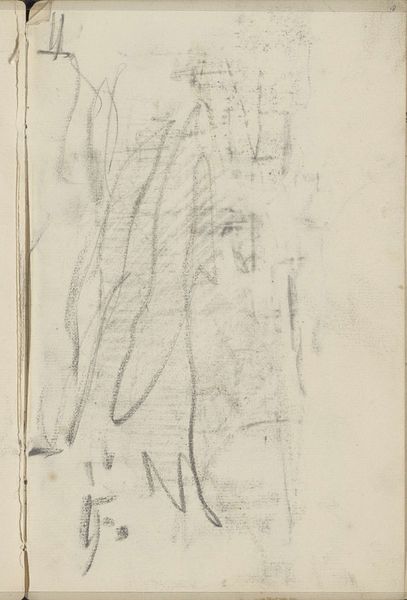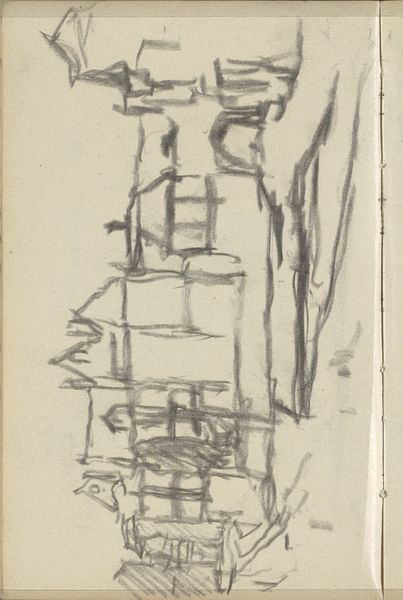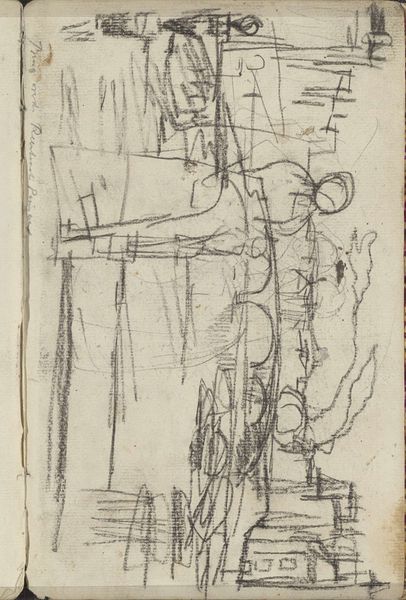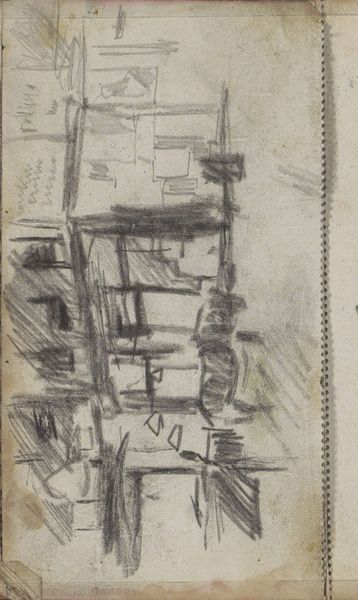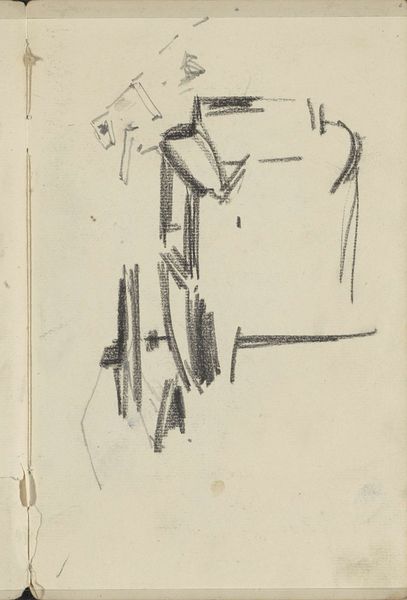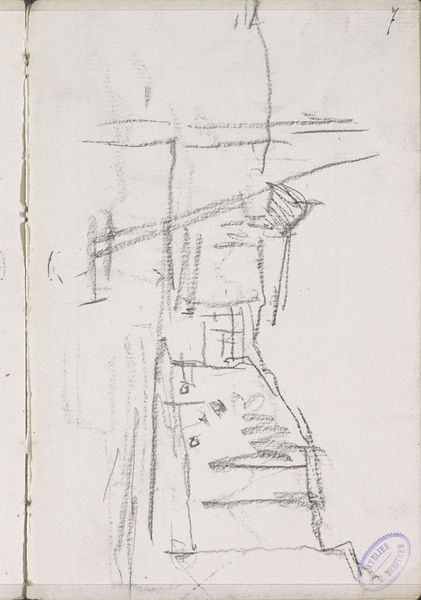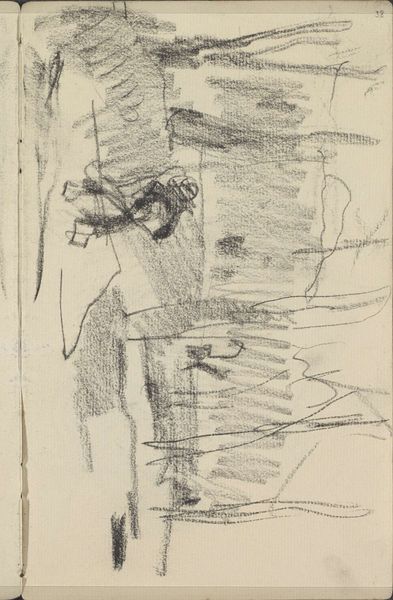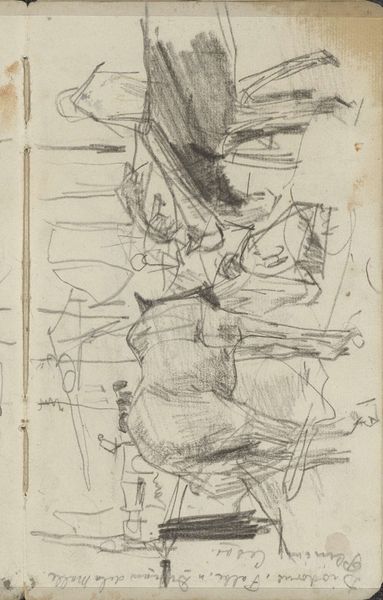
Copyright: Rijks Museum: Open Domain
Editor: Here we have George Hendrik Breitner's "Studie, mogelijk van een boot met vracht," created around 1909. It’s a pencil drawing on paper and seeing its fleeting, almost ghost-like quality evokes a sense of something just glimpsed. What do you make of it? Curator: It’s like catching a whisper, isn’t it? I imagine Breitner, sketchbook in hand, trying to seize the essence of a scene that’s forever shifting. I'm thinking, have you ever tried to sketch something like this yourself? The movement, the transience. It is incredibly difficult. The boat is the main object, and then the architecture surrounding it… all fighting for his attention. It is a chaotic, yet calming view. He wasn’t trying to document precisely; he was trying to feel something about the harbour. Editor: Absolutely. And the sketchiness, those loose lines… Do you think that was deliberate? Curator: Deliberate, and brilliantly so. The Impressionists weren't just about replicating reality. They cared about emotion, mood. A sketch like this—incomplete, raw—can sometimes capture more than a highly finished painting ever could. It invites us to participate, to fill in the gaps, doesn't it? What does it make *you* feel? Editor: I get that. There’s a certain energy in its unfinished nature. Like a moment suspended. Curator: Precisely! It’s about the *impression* – the artist, the subject and even ourselves as we are now considering it! Editor: Thinking about impression, and reflecting on what has been said here - it shows the pure talent to show a movement using minimal lines, really - and, for me at least - adds something more to the finished picture. Curator: I completely agree. A look at how art in progress can carry its own magic and feeling.
Comments
No comments
Be the first to comment and join the conversation on the ultimate creative platform.
